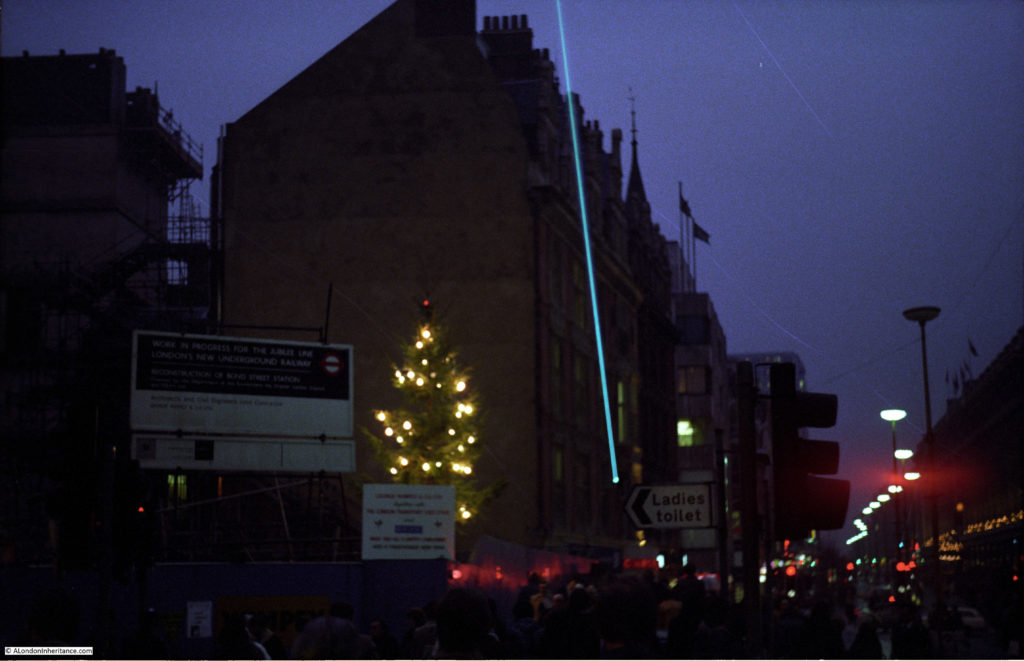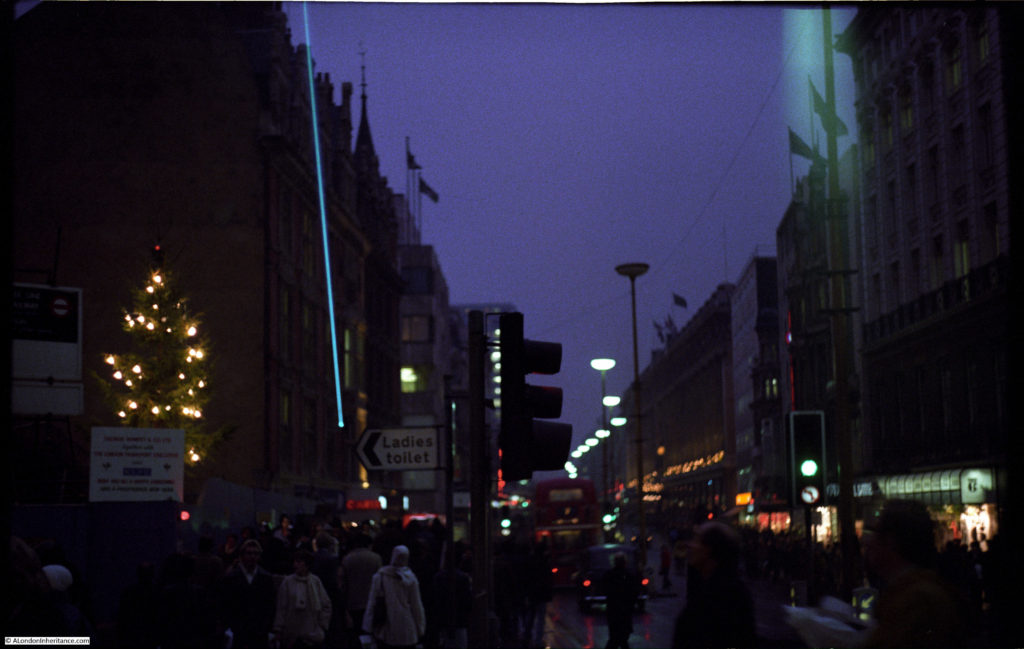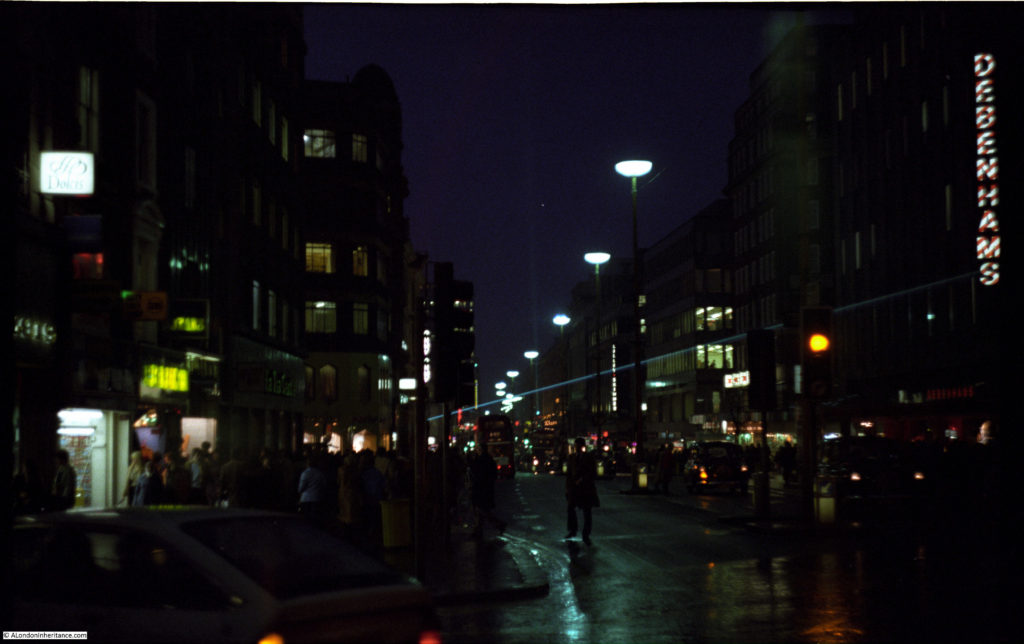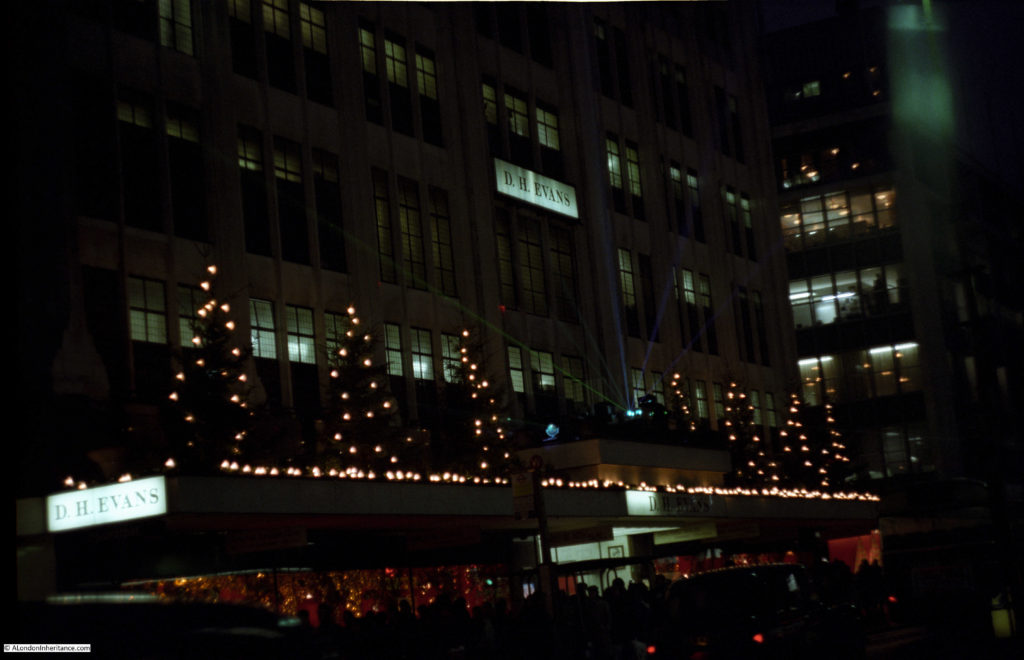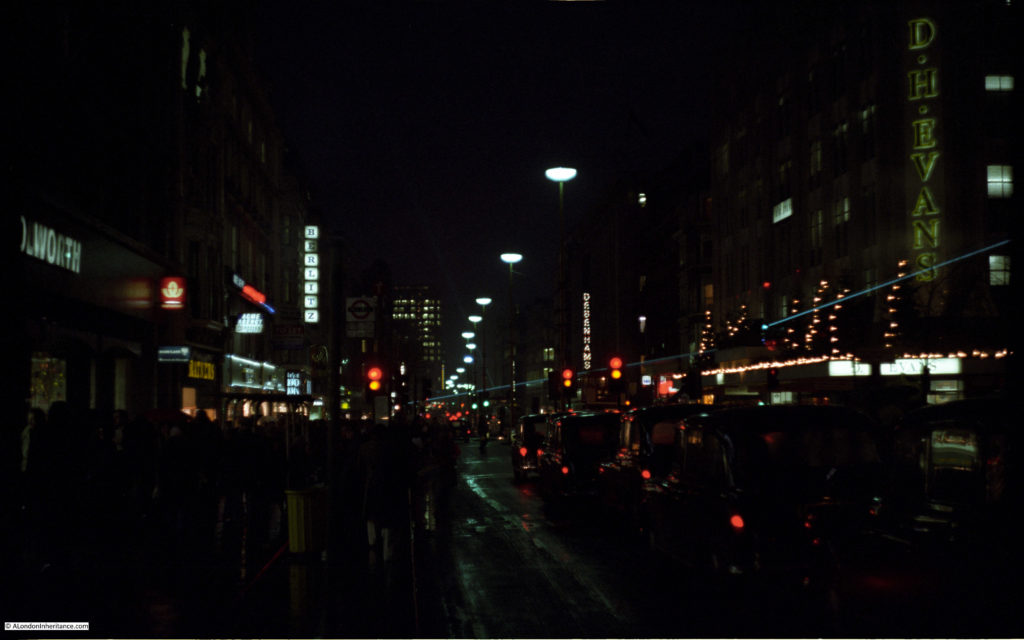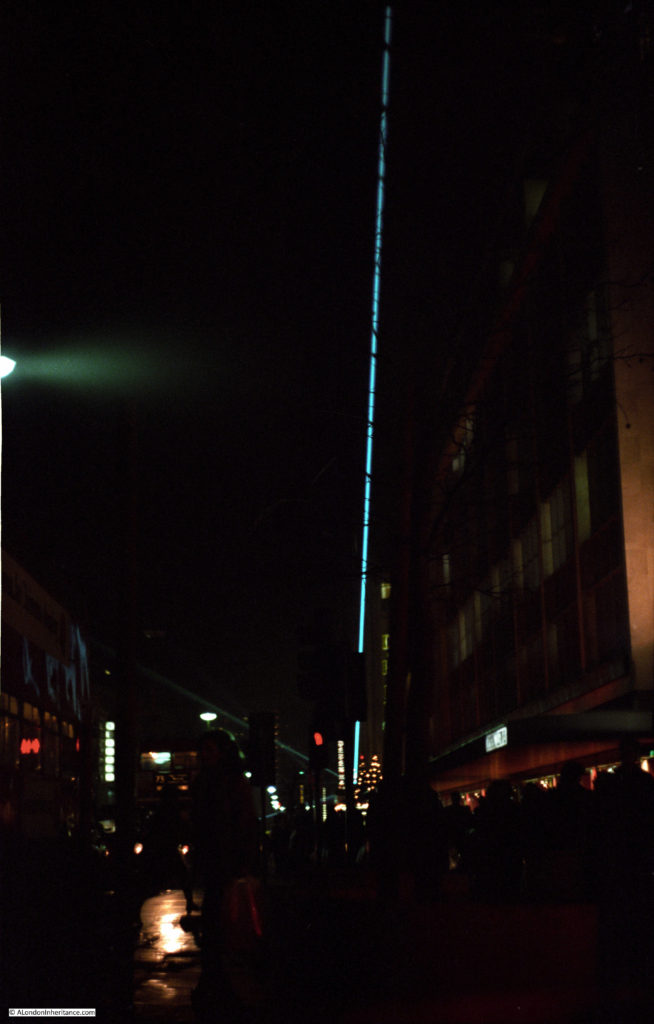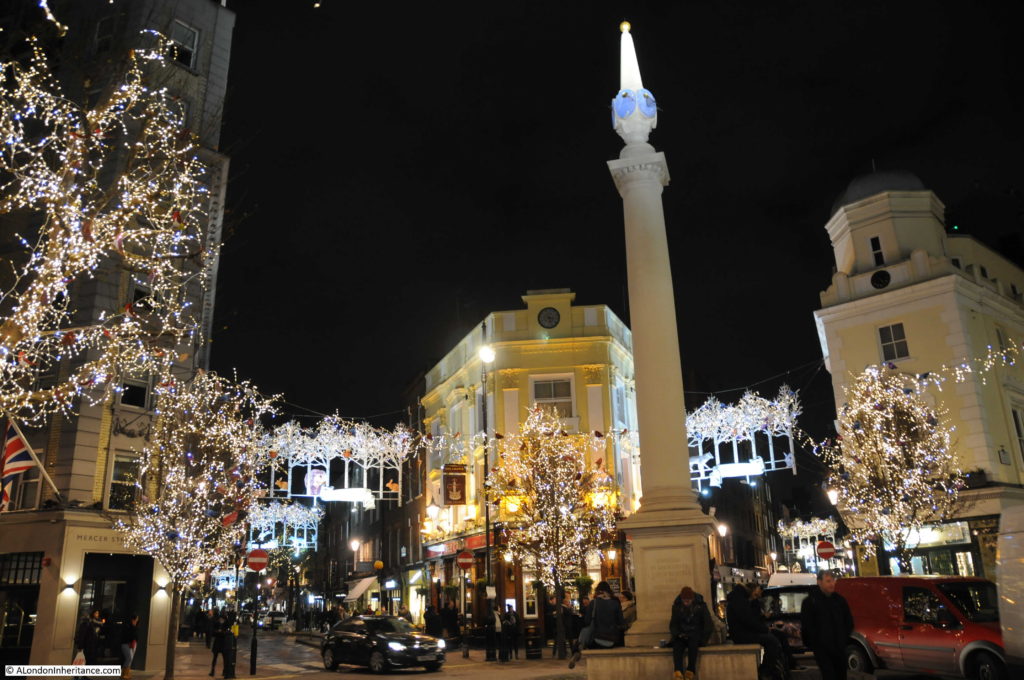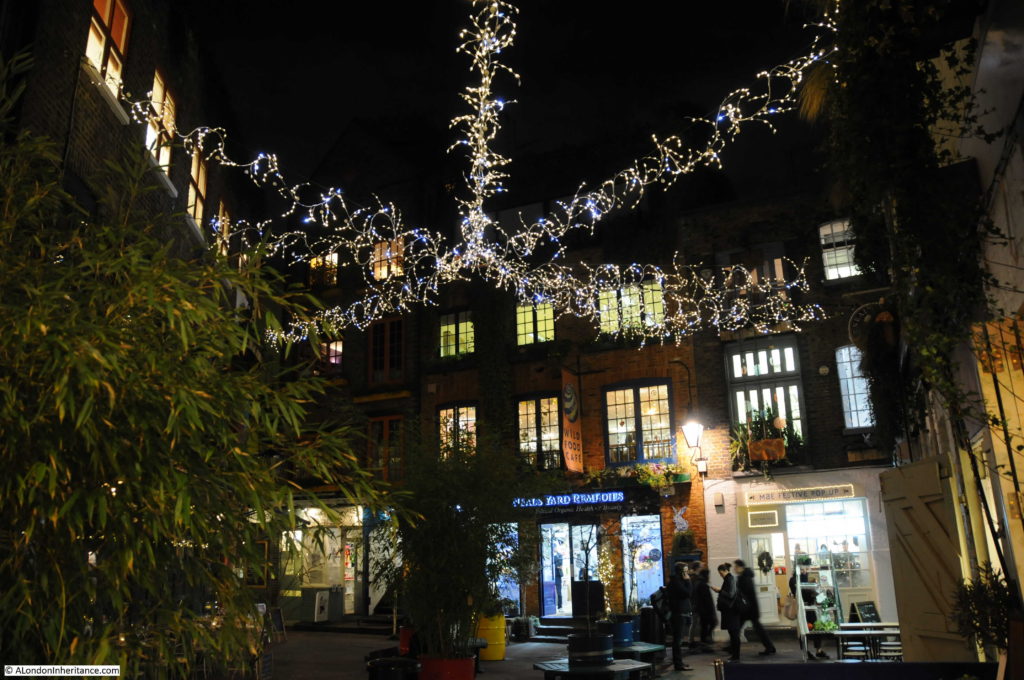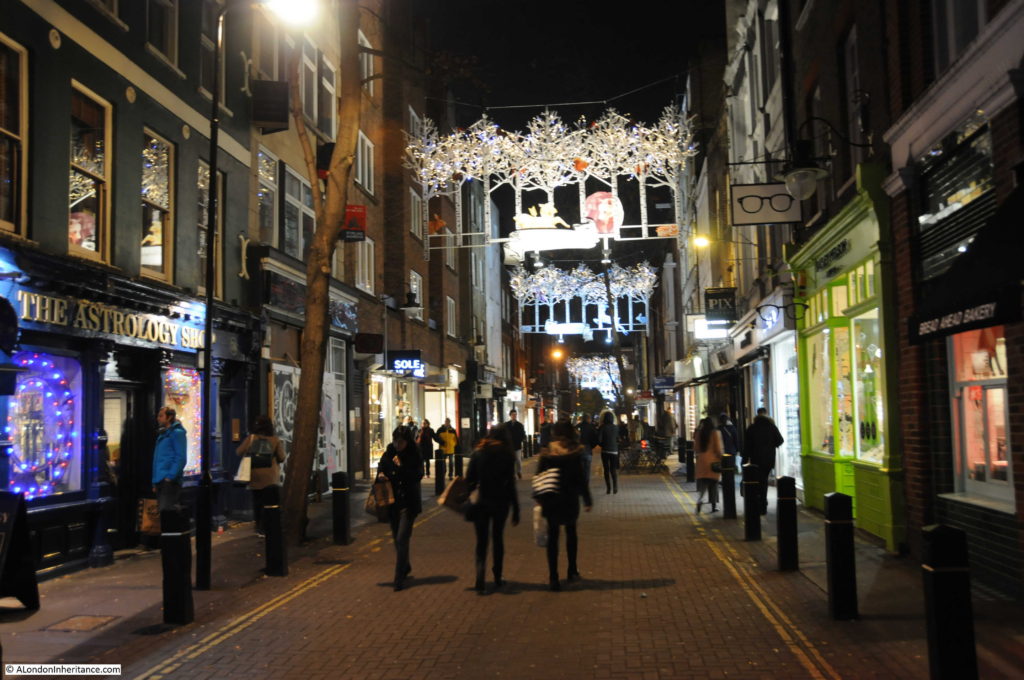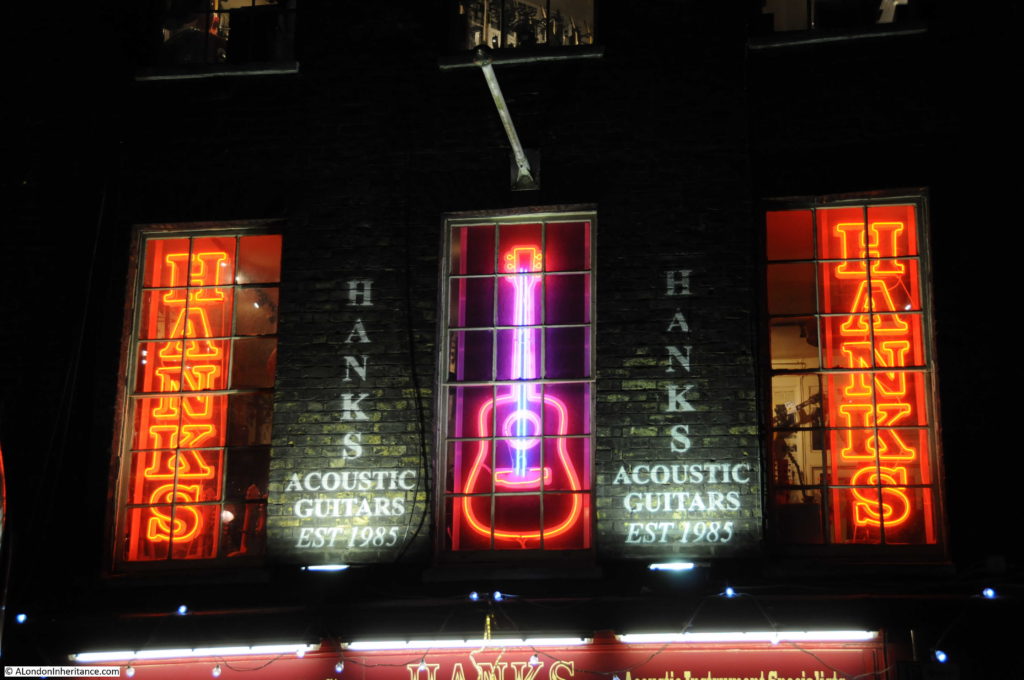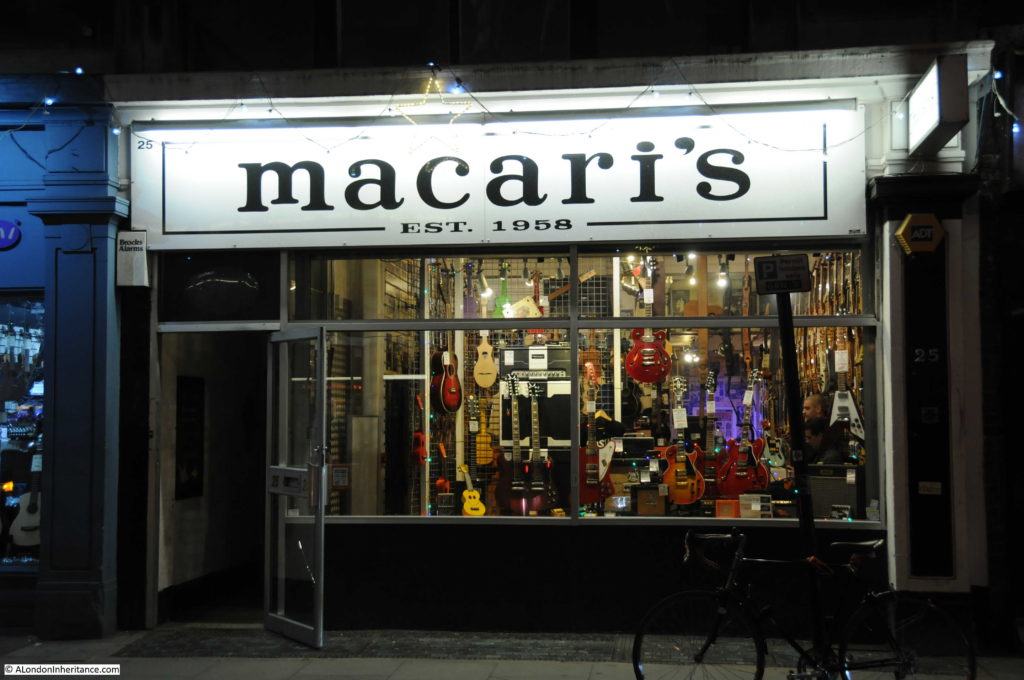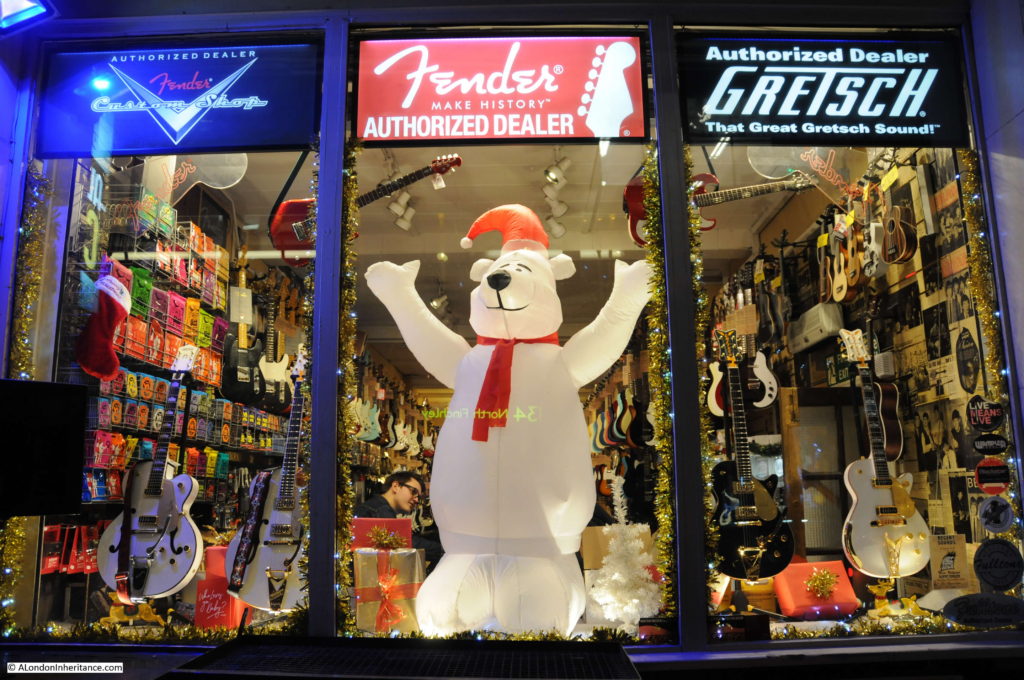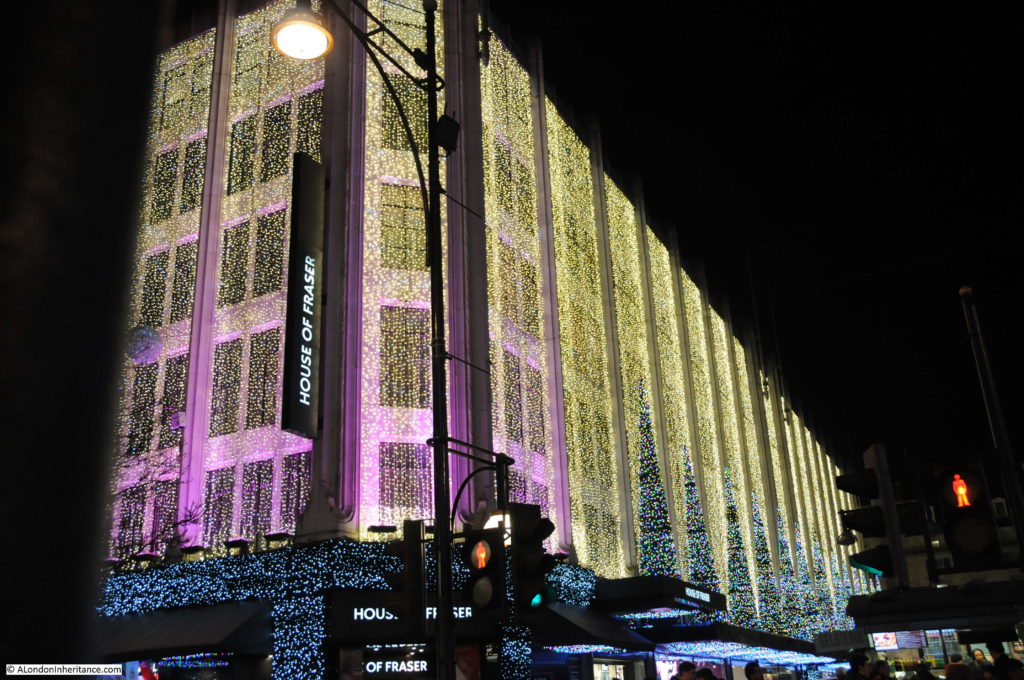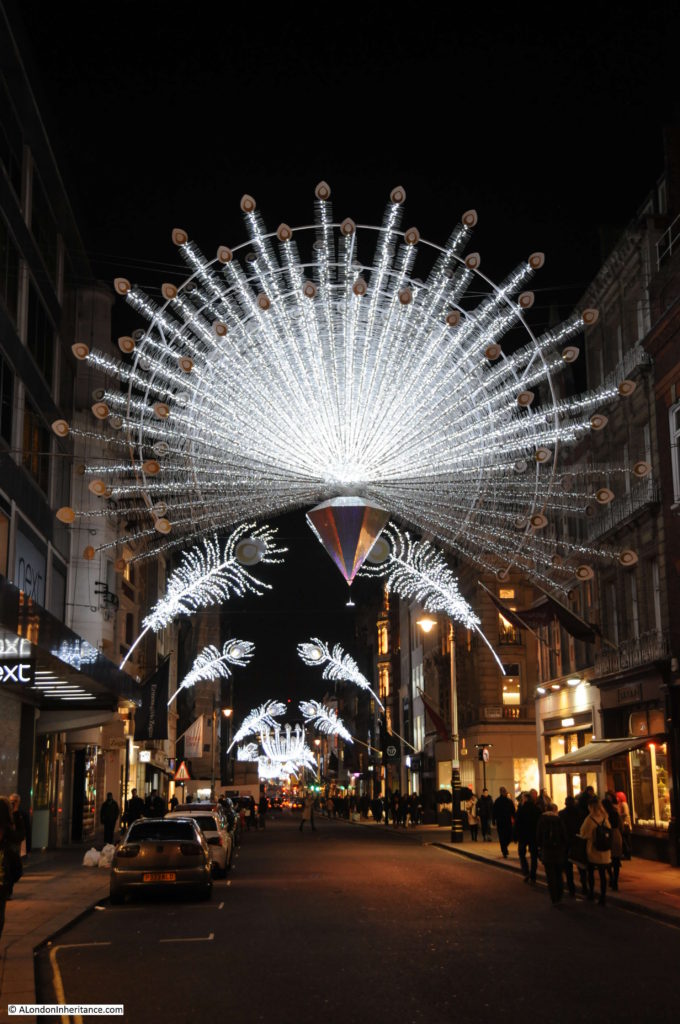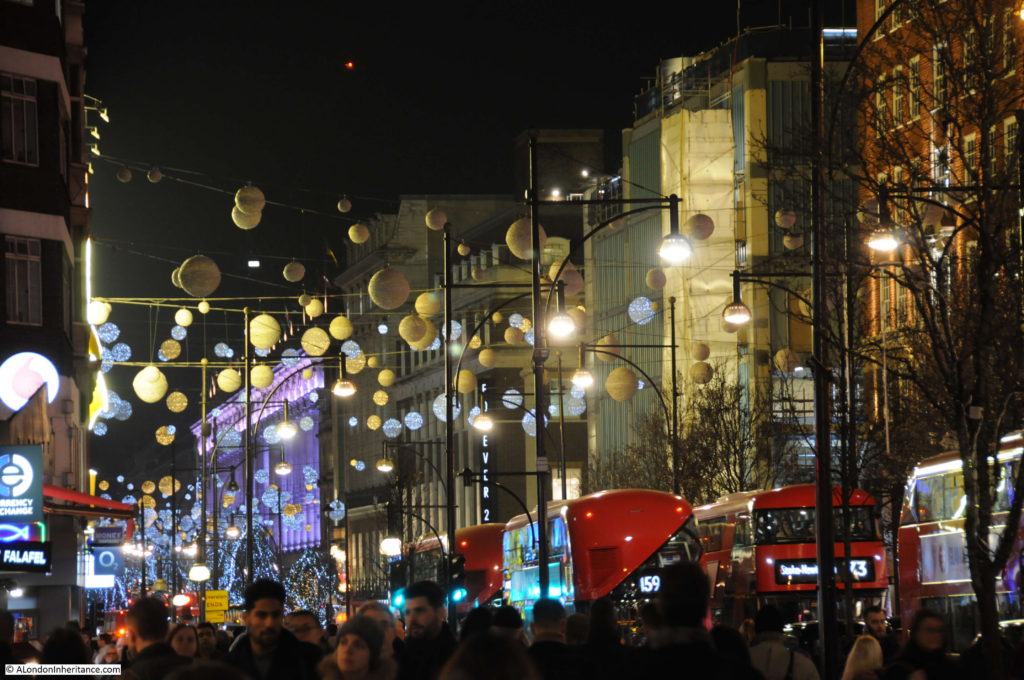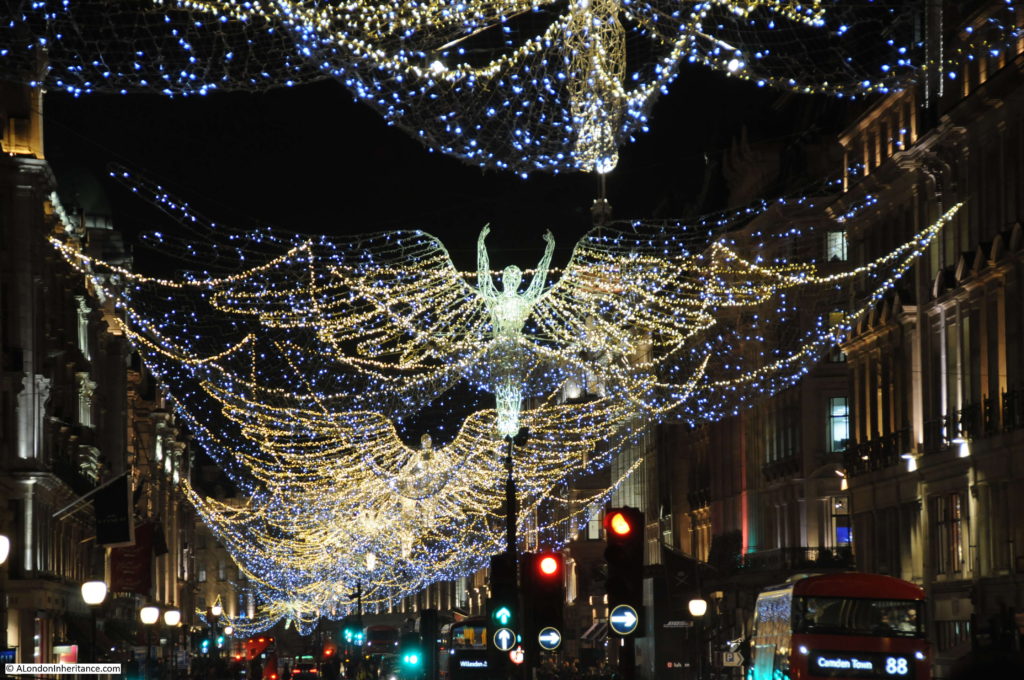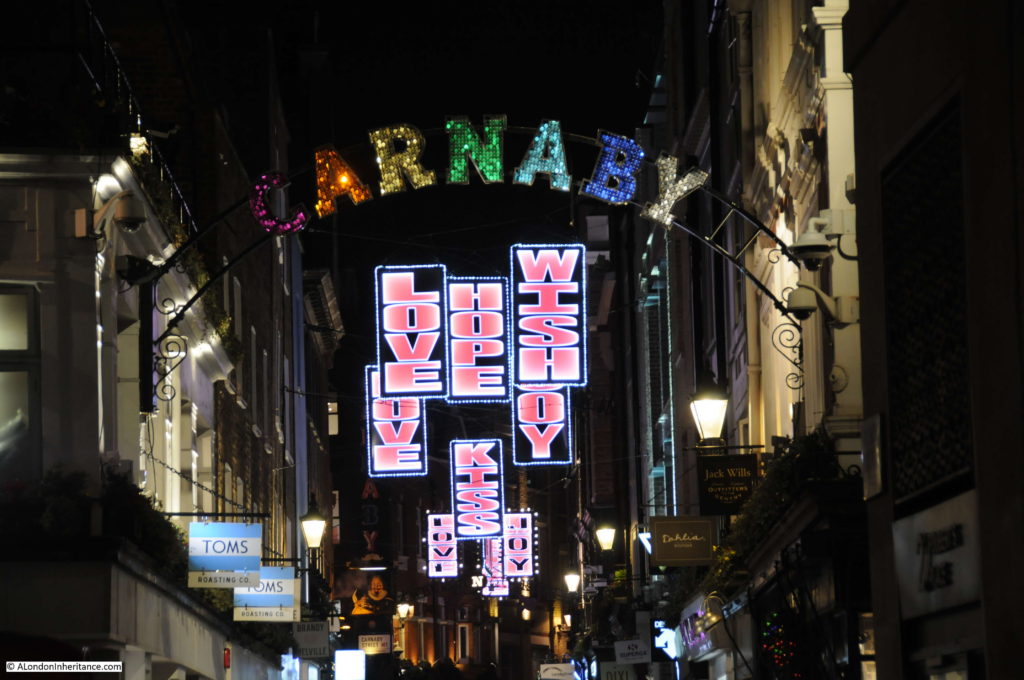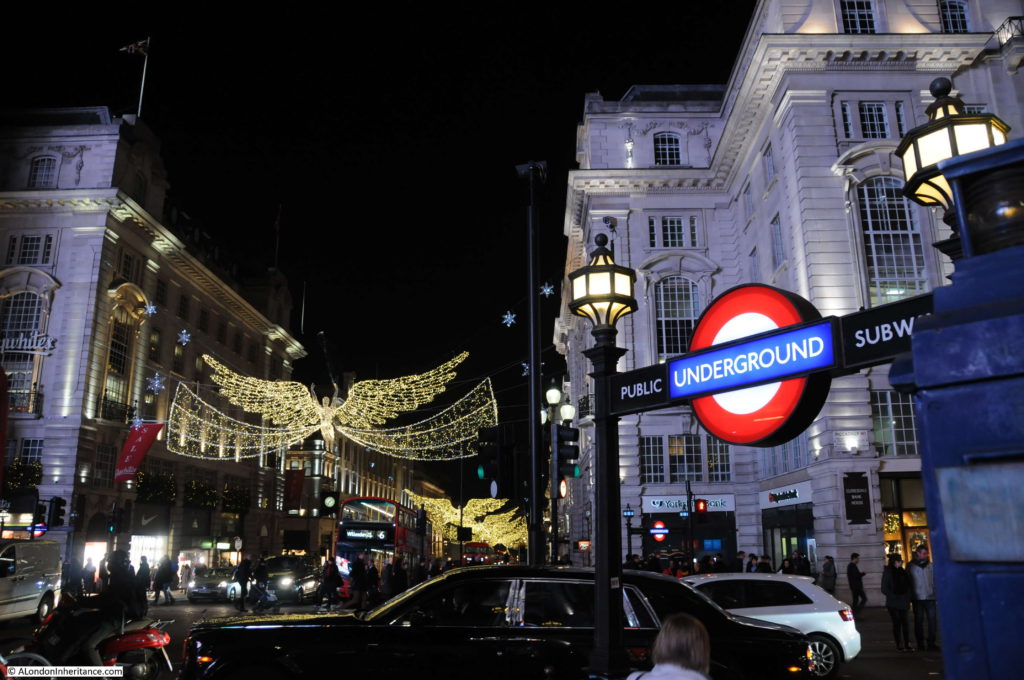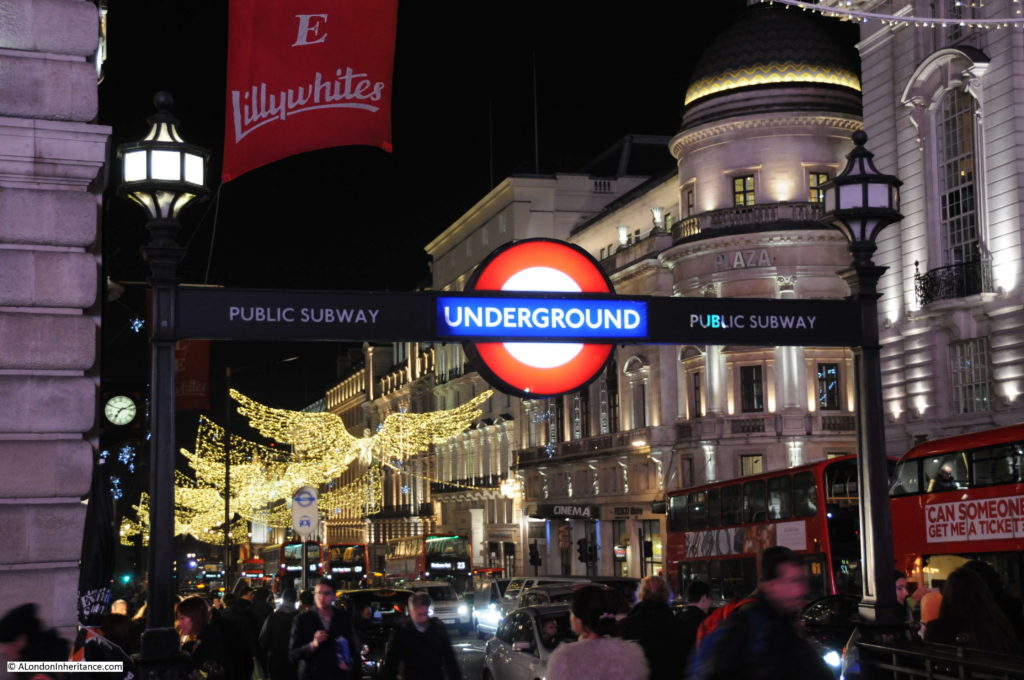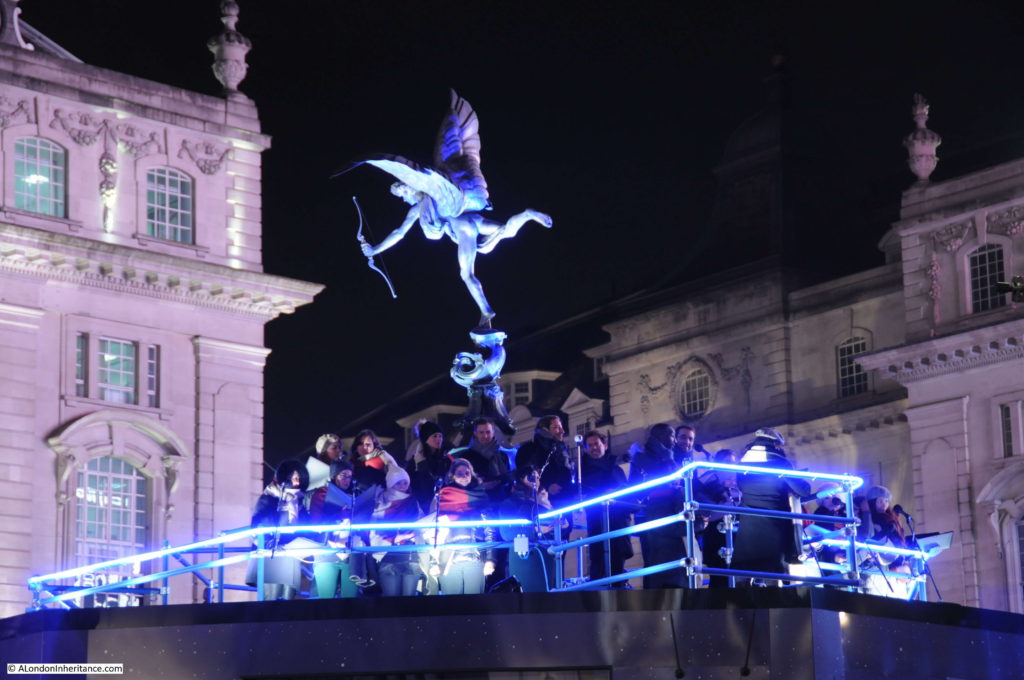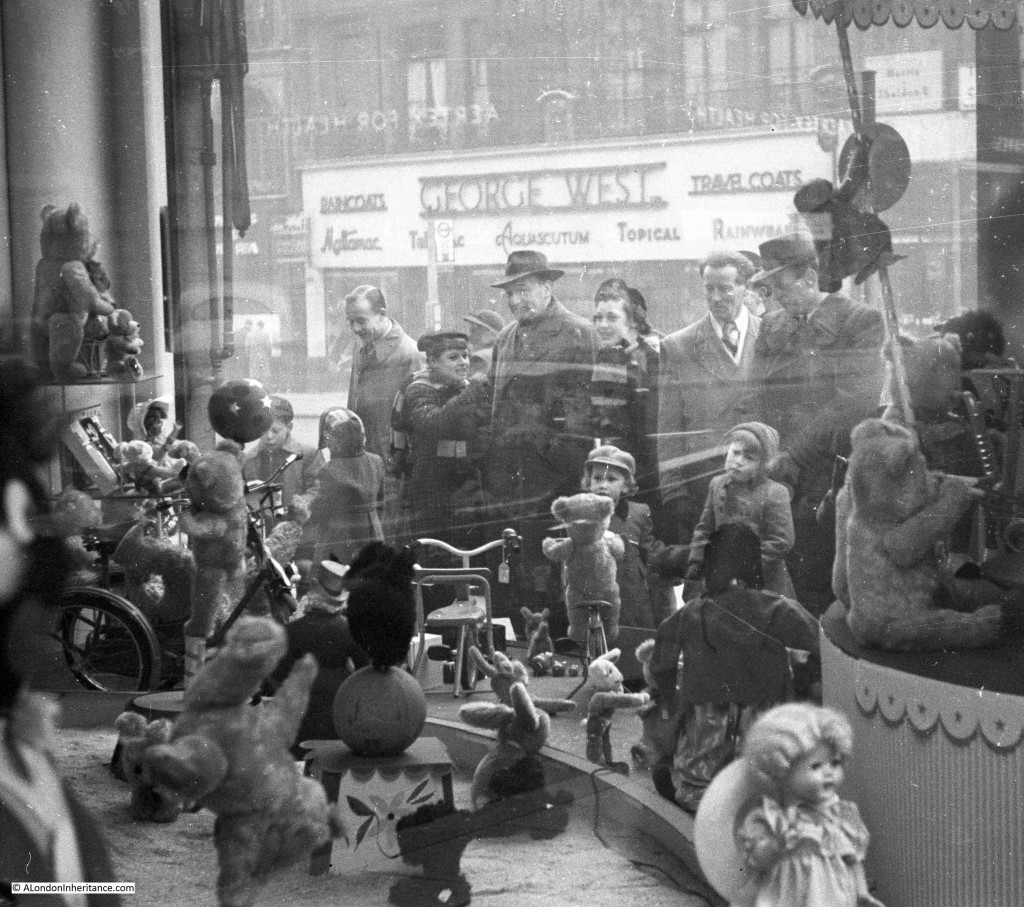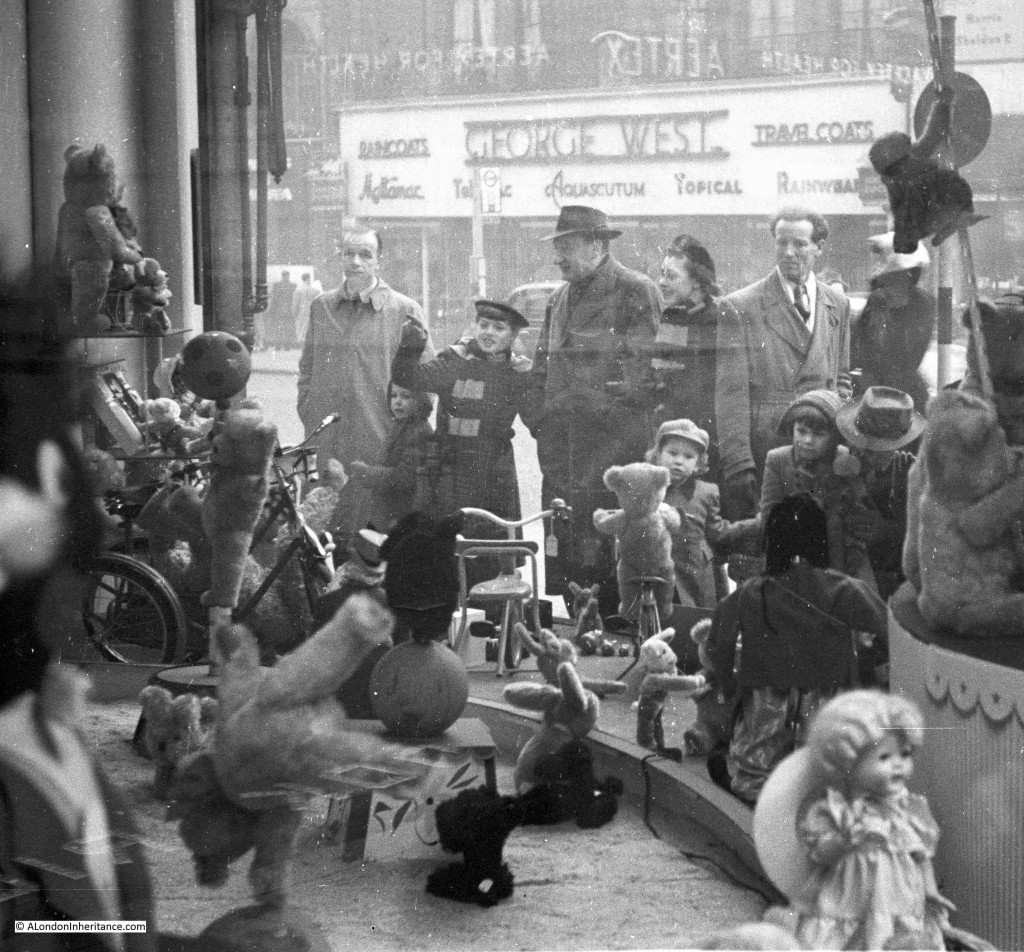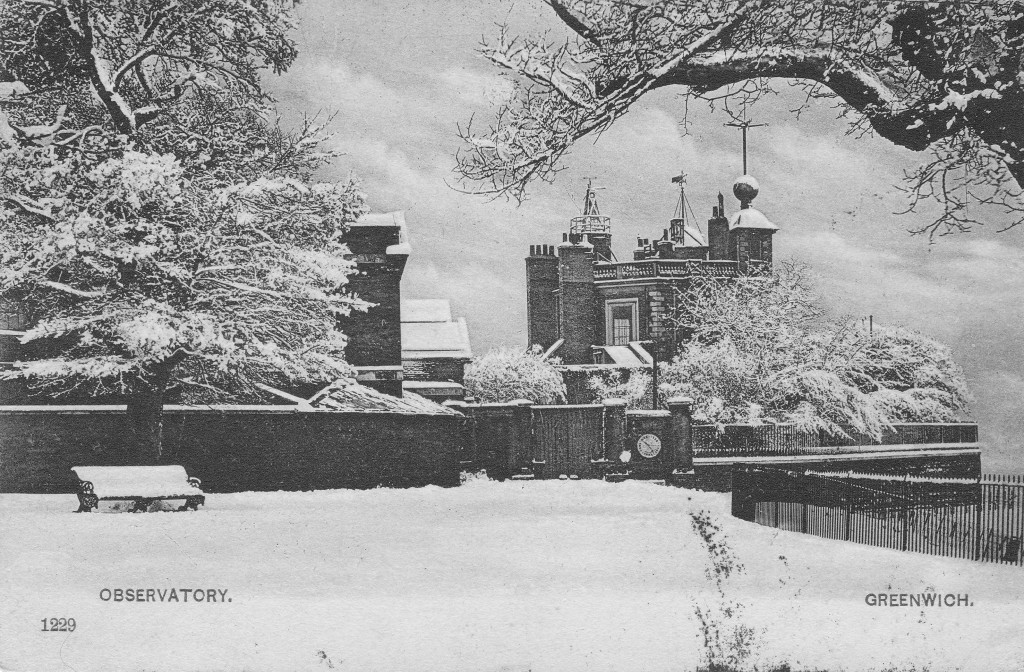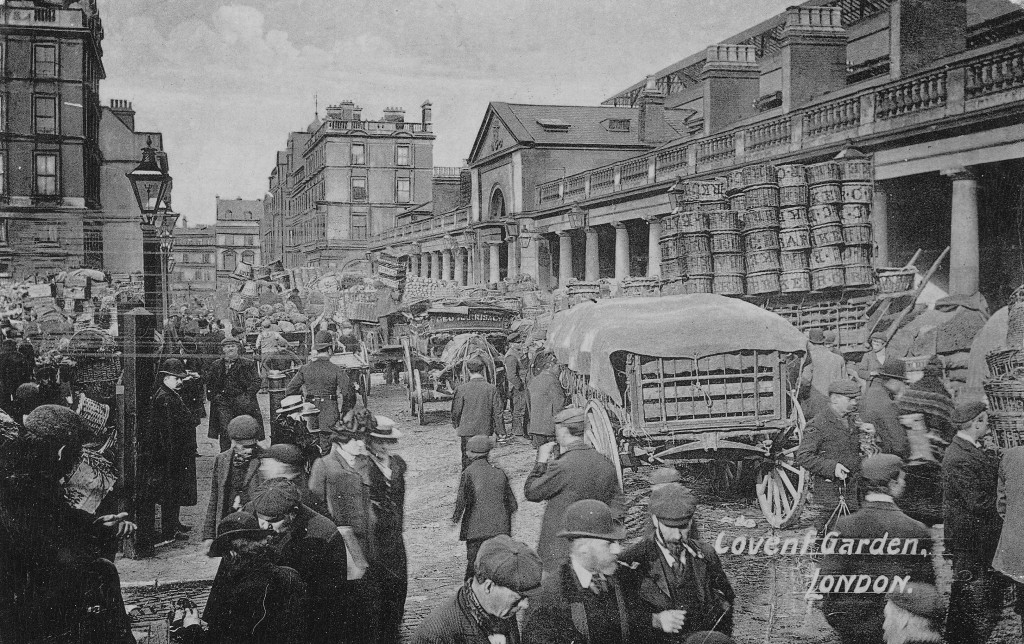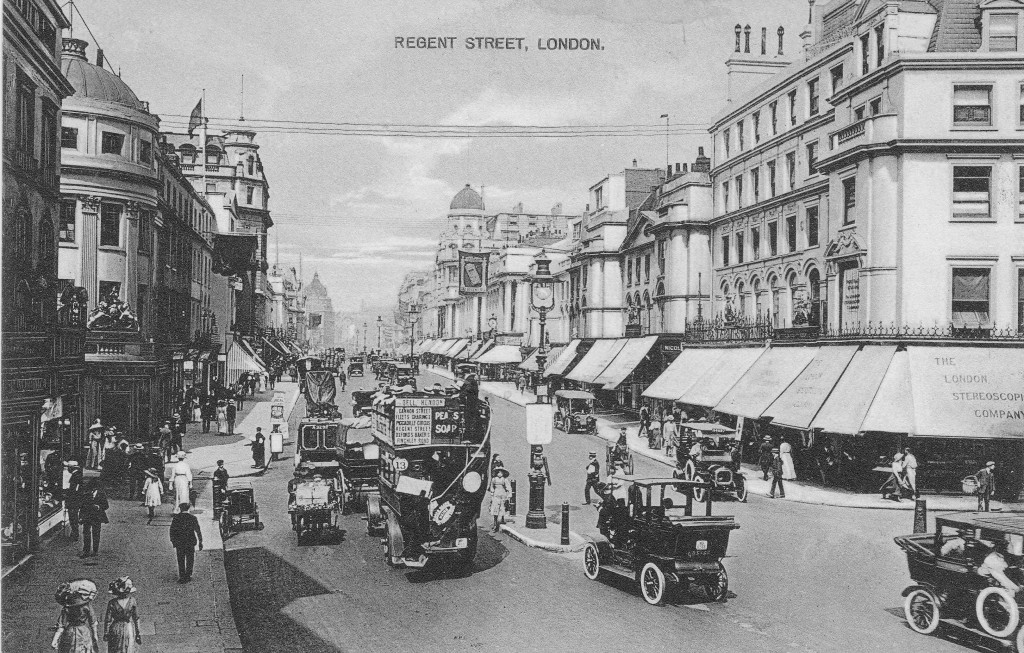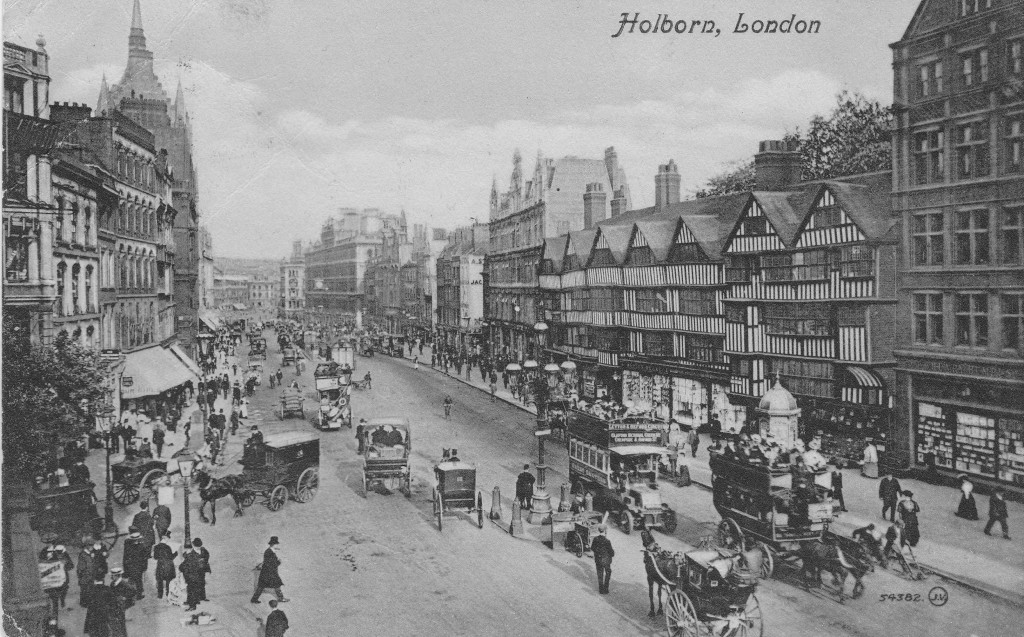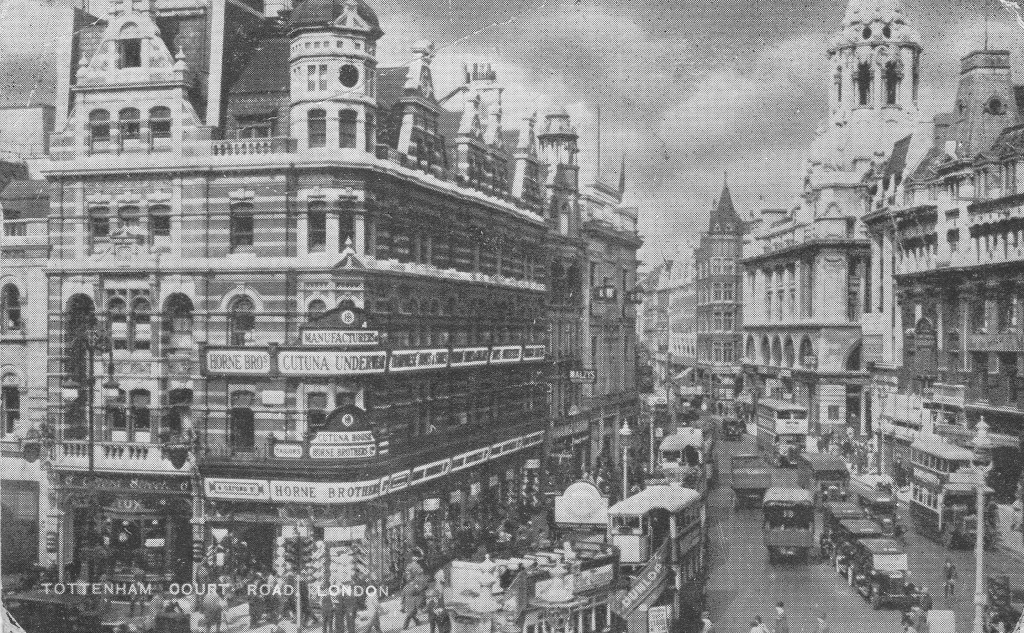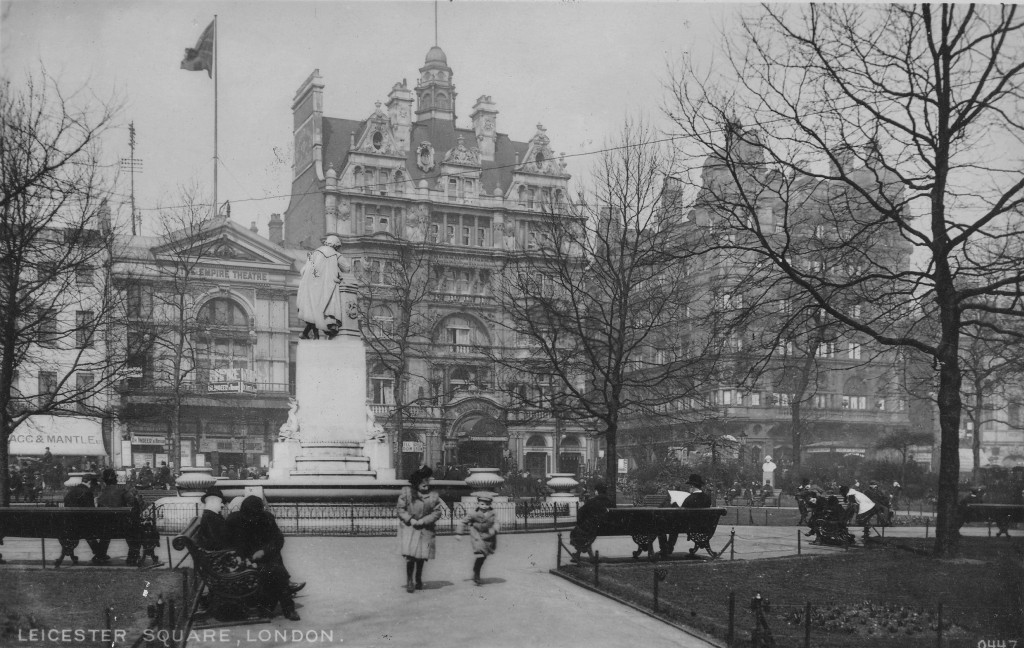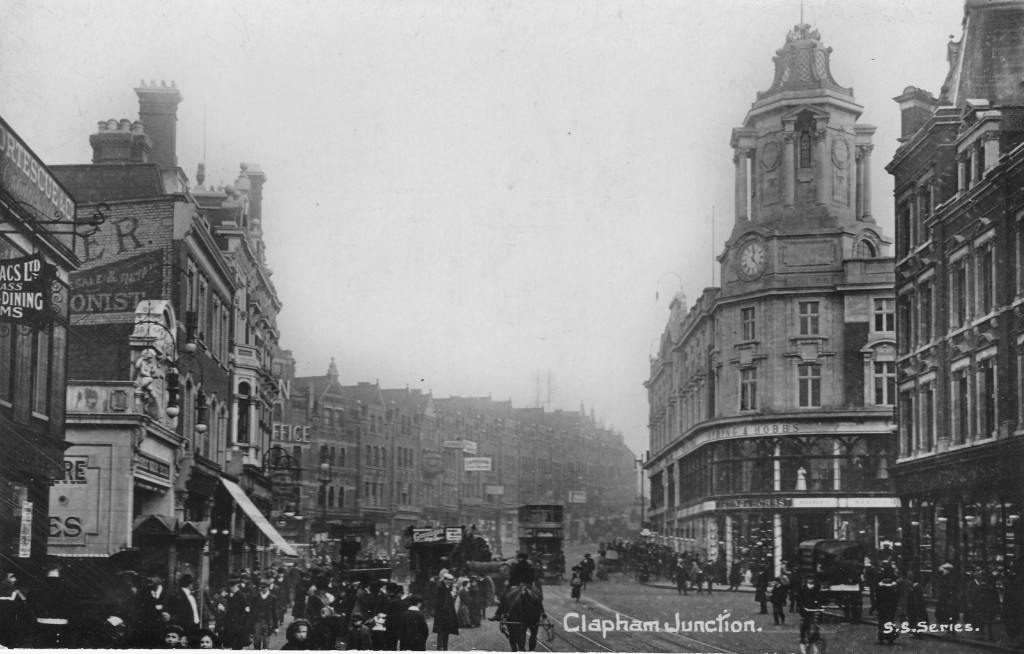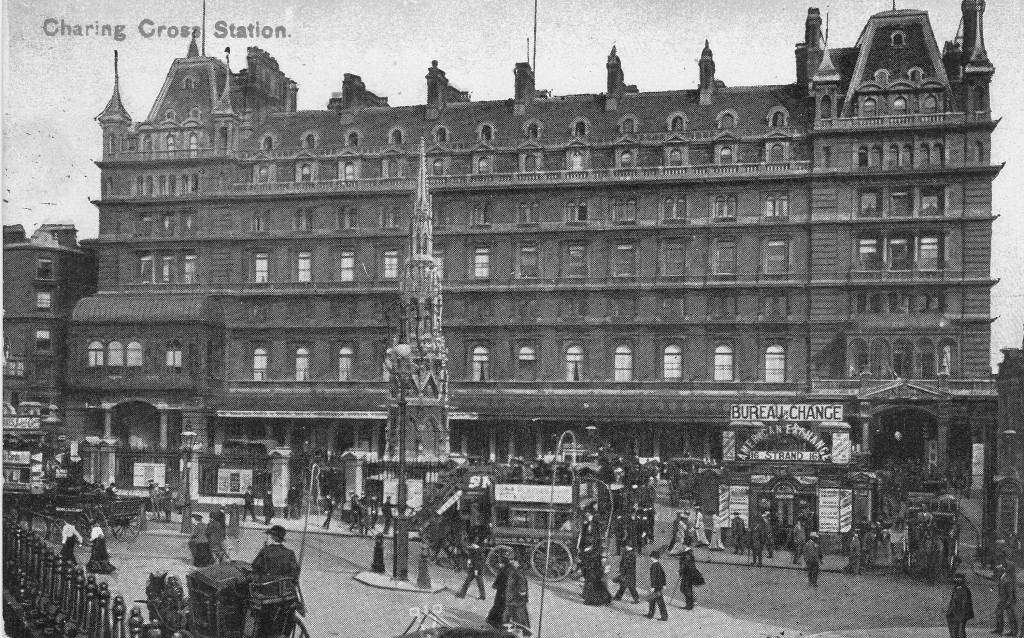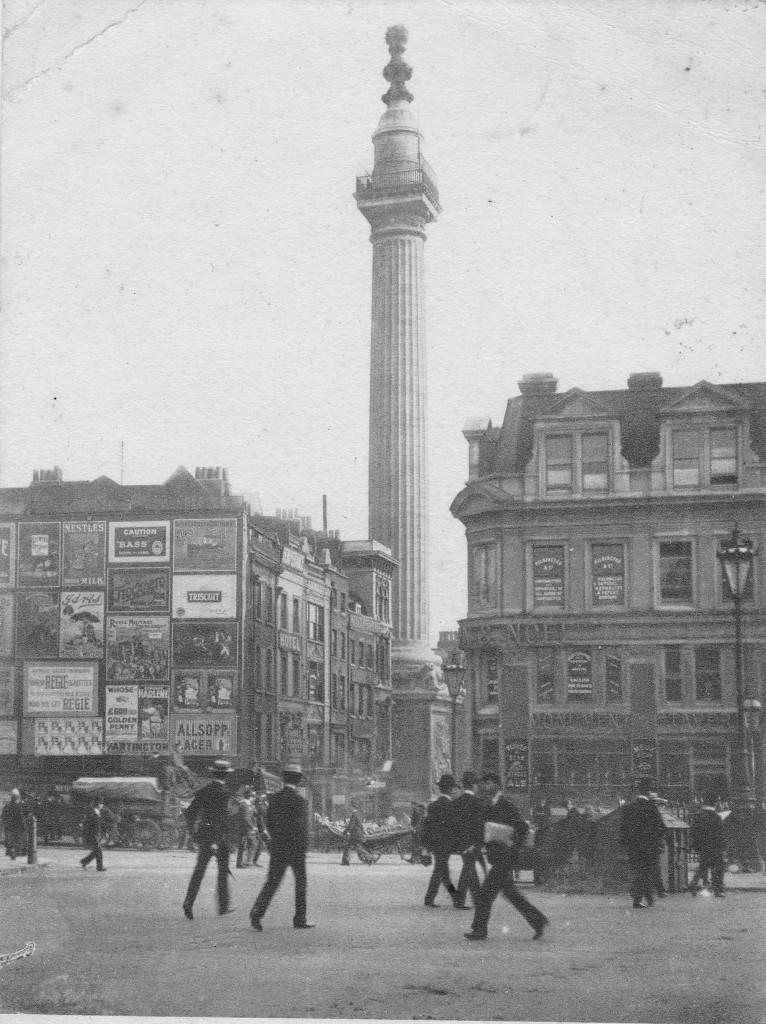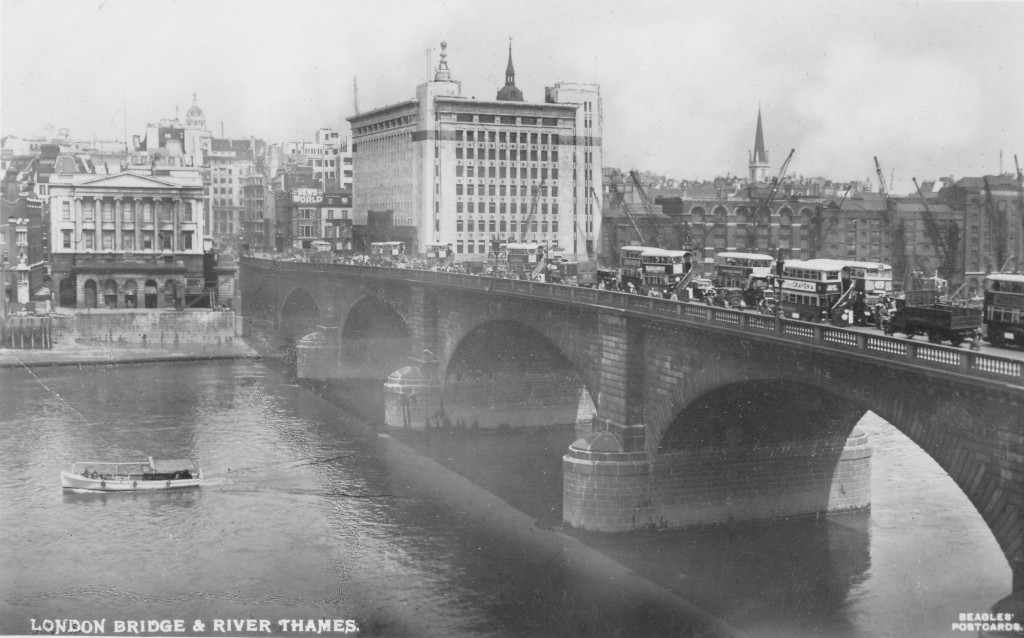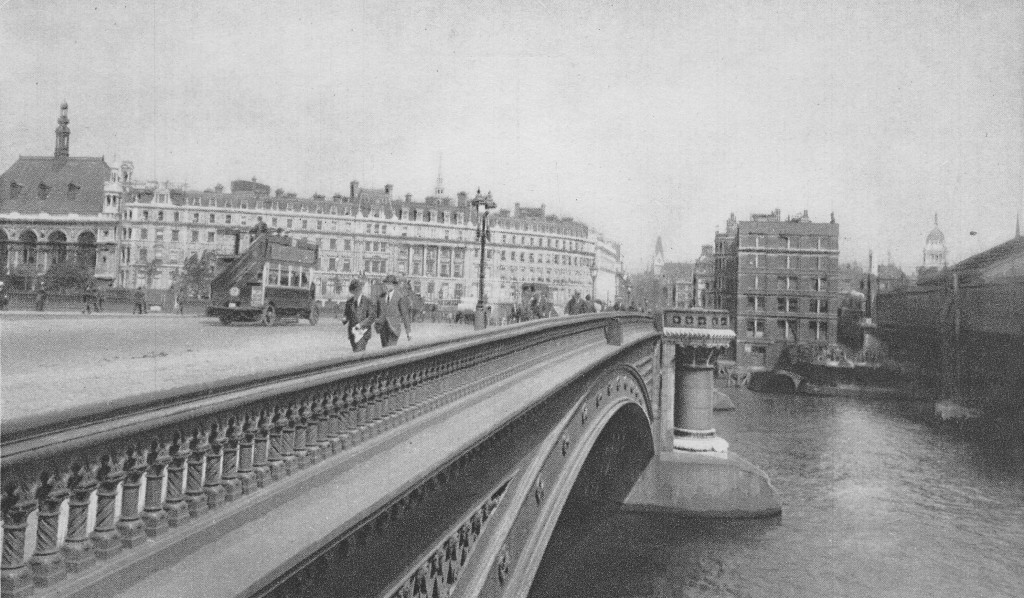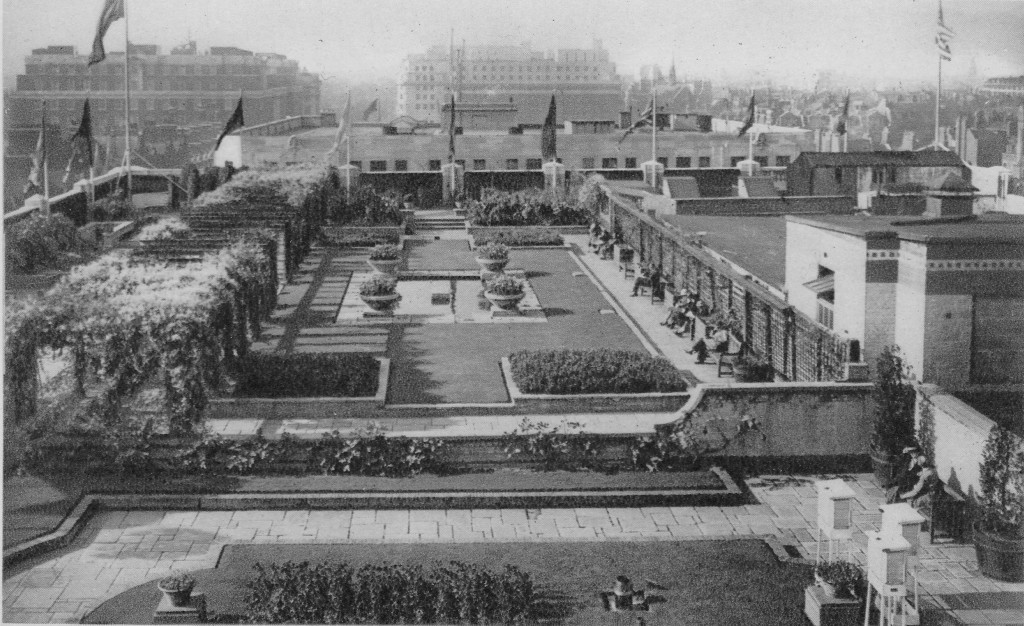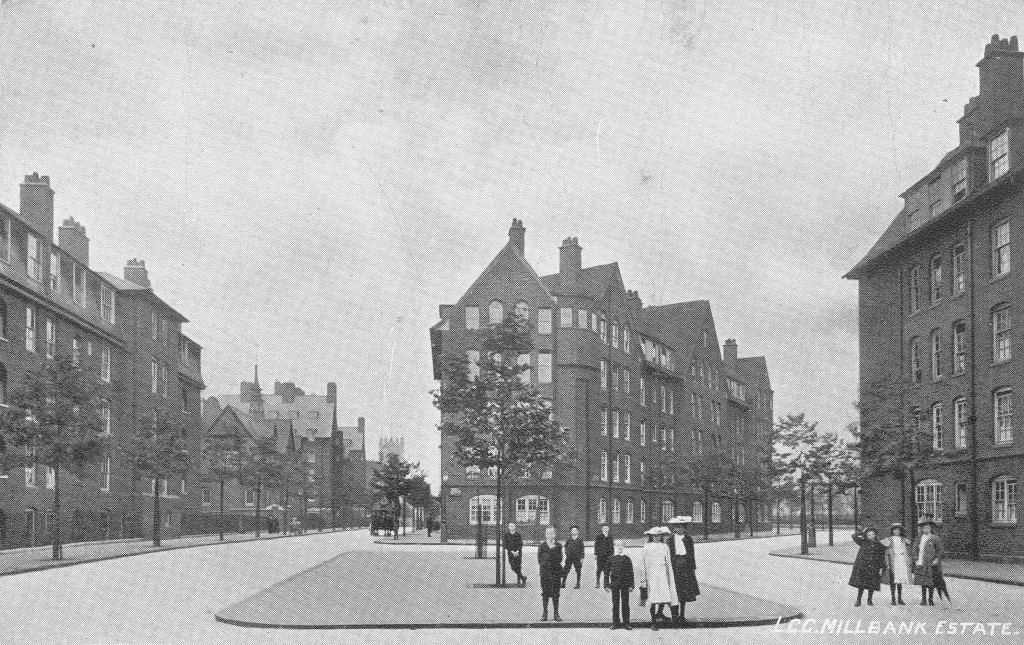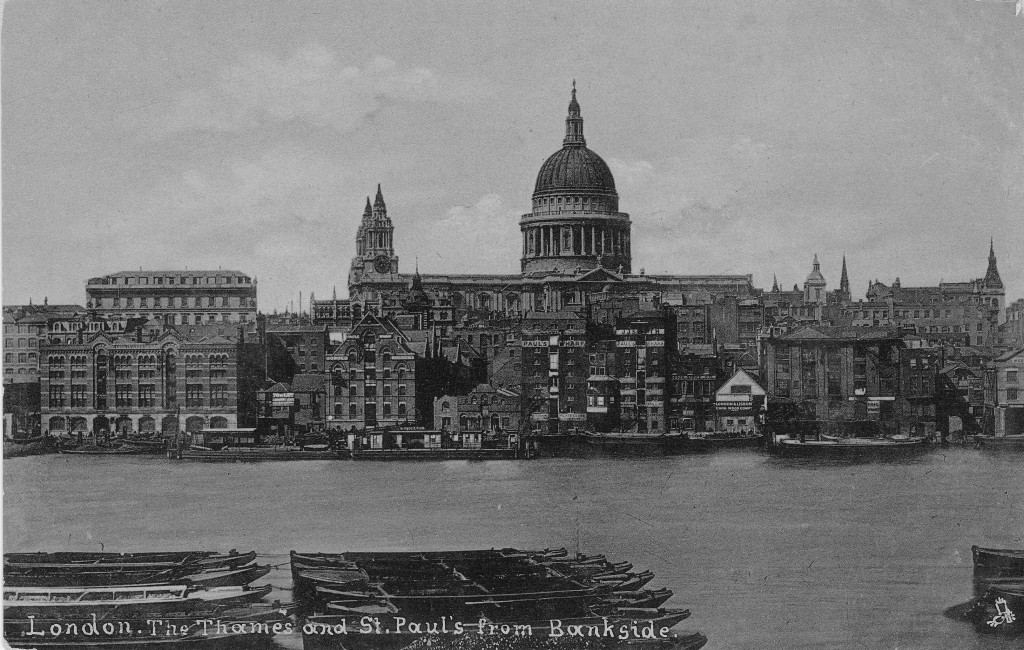Before I start this week’s post, which also falls on Christmas Day, can I wish you a very Happy Christmas, and thank you for reading and subscribing to my blog. I am almost at the end of Year 3 and have lots more to write about which I hope you will find of interest.
For a Christmas Day post, a comparison of London Christmas Lights from the rather gloomy late 1970s with those in 2016.
In 1954 Regent Street was the first of the central London shopping streets to have Christmas lights, Oxford Street followed five years later in 1959. There were a number of years in the 1970s when Oxford Street did not have any Christmas lights due to the recession of the middle years of the decade and the general financial climate, however they restarted again in 1978 with the unusual option of having laser lights shining up and down the street. I assume it was thought that these would be a rather novel form of lighting and much cheaper than large light decorations run across the street.
To mark the return of Christmas lights to Oxford Street and to record what was hopefully an impressive display, I took my first decent camera up to Oxford Street (a Canon AE1 recently purchased on HP – Hire Purchase before the days of Credit Cards) and without a tripod I attempted some photos using Kodak Kodacolor 400 film, faster than my normal film in the hope that I would not suffer too much with camera shake.
Arriving at Oxford Street as it got dark, the lasers did not really meet with expectations. A number of laser systems were mounted a various places along Oxford Street with a beam of light from each running the length of the street. There were not enough lights and a thin beam of blue, red or green light did not seem to have any relevance to Christmas. It was all rather strange and I can understand why it has not been repeated since.
Oxford Street in the mid 1970s was generally much darker than it is now. Shops did not have the same level of Christmas displays and window lights that they have today.
The following photos are a sample I took in 1978 and then for comparison I went for walk one evening in December 2016 to look at the lights across the main shopping streets of central London today. The 1978 photos also show some of the retail brands that have since disappeared.
One of the Oxford Street lasers. The Christmas tree is on the construction site for the new Bond Street station and the Jubilee Line. The large sign on the left reads “Work in progress for the Jubilee Line – Reconstruction of Bond Street Station”.
Looking up Oxford Street towards Marble Arch. Selfridges has a row of lights just above street level. A Take 6 store is on the right.
Blue and red lasers. The sign of the 100 Club is on the right – fortunately still there today.
Blue laser running down the street. Debenhams on the right, Dolcis shoe shop on the left.
A rather faint laser shines down a gloomy 1970s Oxford Street. The vertical lights are advertising the now defunct shoe shop Saxone.
Christmas trees along D.H. Evans, with a fan of blue and green lasers from just above the main entrance to the store. The D.H. Evans store disappeared in 2001 when it was re-branded as the House of Fraser.
Woolworth’s on the left, D.H,. Evans on the right. Just beneath the Berlitz sign (language school) is a sign for the Lady at Lord John fashion chain (click on the photo to enlarge) – one of the many high street brands that have disappeared in the last 40 years.
The best place to see the lasers seemed to be from directly underneath when they were at their brightest.
Regent Street kept to their more traditional Christmas lighting with displays running across the street and were more impressive than those at Oxford Street. Looking down Regent Street with a Take 6 store on the right.
Dickens and Jones.
So how does 1970s London compare with the Christmas lights of 2016? In the week before Christmas, I took a walk one evening starting at Monmouth Street, through Seven Dials and up to Oxford Street, then down Regent Street to Piccadilly Circus.
Starting in Monmouth Street with lights across the street and in the trees.
Seven Dials looking very festive.
Neal’s Yard just off the northern leg of Monmouth Street.
View down Monmouth Street.
Penguins decorating the front of Arthur Beale, London’s Yacht Chandler on Shaftesbury Avenue.
From Shaftesbury Avenue, it was along St. Giles High Street and into Denmark Street. Not known for Christmas lights, although the music shops look good after dark.
Regent Sound Studios with their take on Christmas window decorations.
Up now into Oxford Street and the lights of John Lewis.
Oxford Street’s 2016 Christmas lights.
House of Fraser.
Looking down New Bond Street from Oxford Street.
Oxford Street at Christmas. Pavements crowded with people and the street at times seems more like a car park for buses……
…..and taxis.
Back down into Regent Street who in most of the years I can remember since 1978 have more ambitious street lights than Oxford Street.
The length of Regent Street looking down towards Piccadilly Circus.
Carnaby Street from Regent Street with their own interpretation of Christmas lights.
Lights continue down the southern end of Regent Street towards Waterloo Place.
An elevated platform had been built around the Shaftesbury Memorial Fountain – or Eros as it is more commonly known. A choir huddled together against the cold and breeze of a December evening but sounding beautiful above the noise of traffic.
View from Piccadilly Circus towards Leicester Square.
My photos from 1978 probably do the lasers a slight injustice due to my lack of photographic experience at the time and the equipment in use, however London after dark at Christmas is now much brighter than it was in the 1970s. The crowds and traffic do seem much the same in the weeks running up to Christmas, but as ever I will take any excuse for a walk around London.
Thanks again for reading, and a very Happy Christmas.

